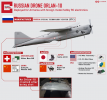“What degree of human involvement should there be in the use of force?” Paul Scharre on weapon autonomy and the human role in future warfighting
Install the app
How to install the app on iOS
Follow along with the video below to see how to install our site as a web app on your home screen.
Note: This feature may not be available in some browsers.
You are using an out of date browser. It may not display this or other websites correctly.
You should upgrade or use an alternative browser.
You should upgrade or use an alternative browser.
UAV / UCAV / LAR (robotit) Uutiset ja jutut
- Viestiketjun aloittaja Raveni
- Aloitus PVM
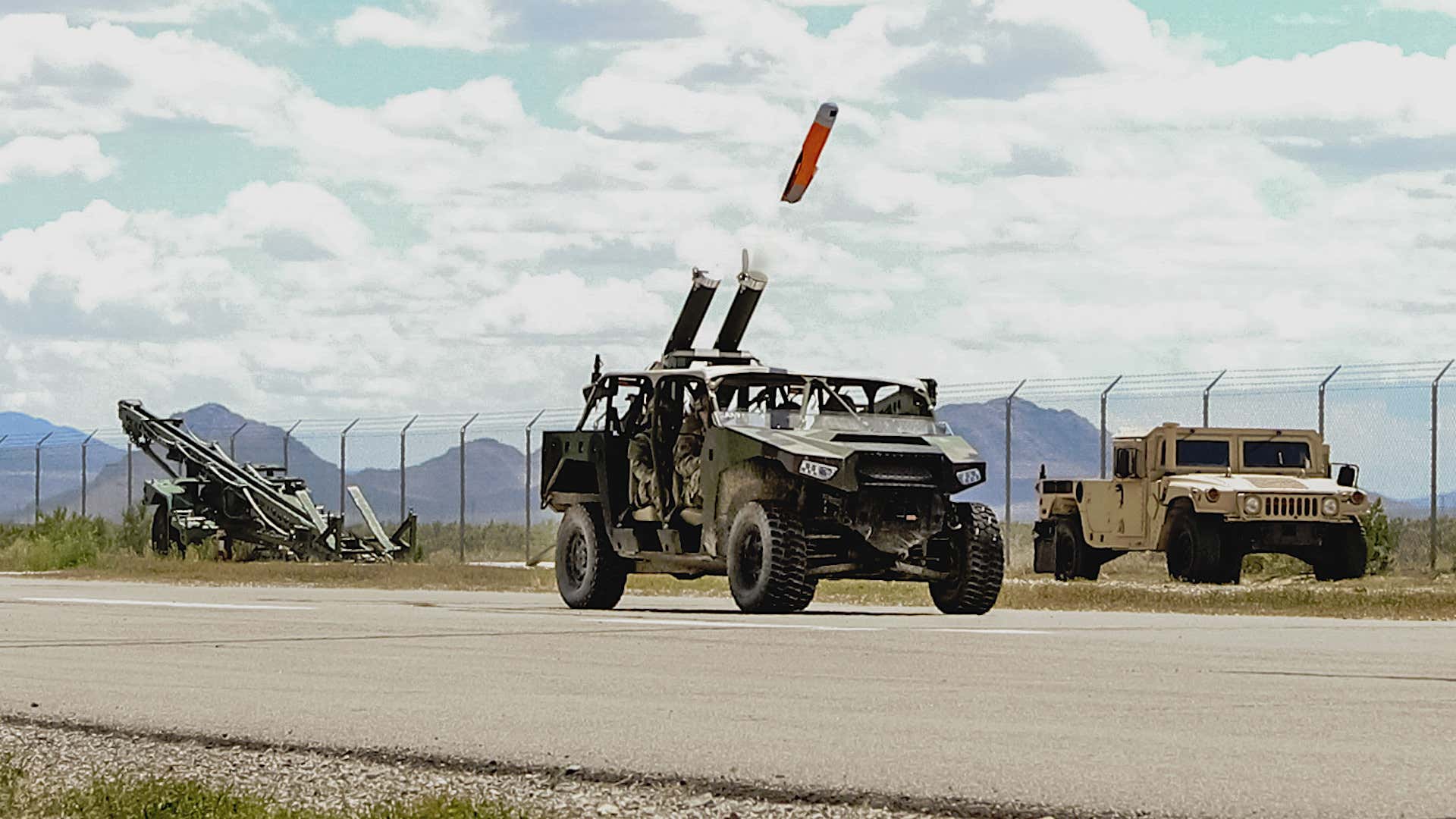
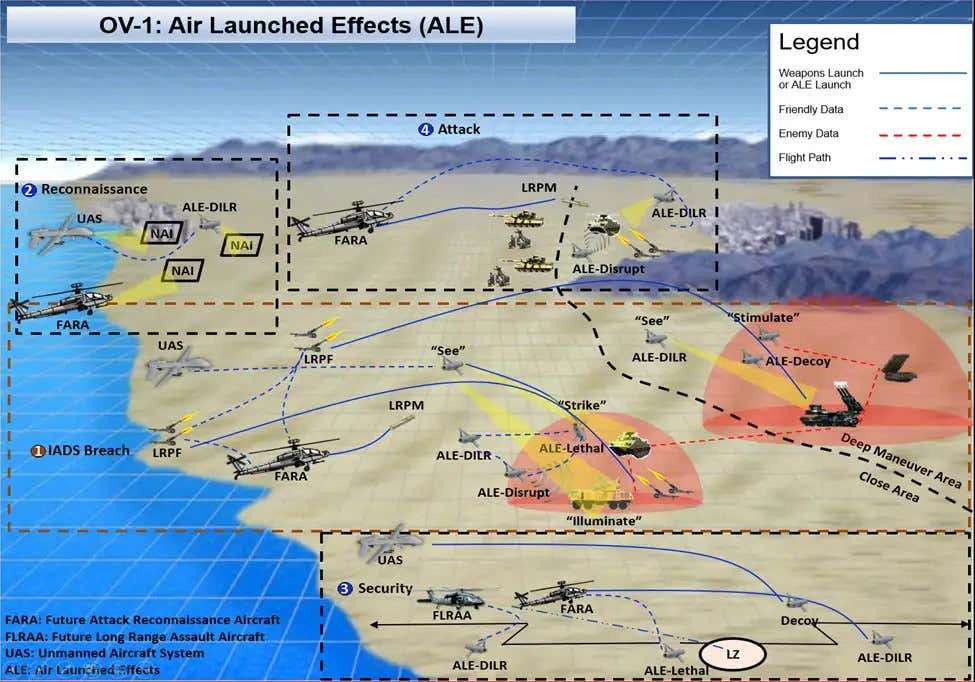
U.S. Army recently tested a new, classified loitering munition, a type of weapon sometimes referred to as a "suicide drone," as part of an advanced warfighting exercise called Edge 21. An experimental network of manned and unmanned aircraft was also used to first locate and then cue those weapons, officially known as Joint Man-in-the-Loop Loitering Munitions, to their targets.
Edge 21, which wrapped up recently, was a two-week-long Army-led exercise at Dugway Proving Ground in Utah that also involved elements of the U.S. Air Force and Marine Corps. The event was focused heavily on future aviation assets and associated concepts of operations, with the scenario revolving around simulated operations targeting enemy forces spread across a notional island chain in the Pacific. Edge 21, with Edge standing for "Experimental Demonstration Gateway Exercise," was intended to help inform Army's broader Project Convergence initiative. Project Convergence is exploring advanced networking and other capabilities, with a heavy emphasis on artificial intelligence and machine learning technology.

Secretive Army Suicide Drone Smashed Mock Air Defenses In High-Tech Exercise
A network of other manned and unmanned platforms helped find the targets for the classified loitering munitions to engage.

US Army aviation exercise unveils unprecedented progress as service preps for future war
F-35B jets rip across the sky, a new demonstrator aircraft collects intel and performs reconnaissance, and drones are shot from the back of an all-terrain vehicle as a highly classified loitering munition blows up targets. Welcome to Edge 21.

Robot Black Hawk To Fly In Project Convergence 21: MOSA Key - Breaking Defense
The wargame will also test new aircraft weapons — a 20 mm cannon and a multi-payload launcher— and a host of electronics enabled by a plug-and-play open architecture, MOSA.
Poiminta maavoimien EW:sta. Eli Gray Eagle drone EW-podeilla. Muuten jutuissa näkyy Hololensia yms.
A critical case in point is a pair of new jamming pods integrated on the MOSA-equipped Grey Eagles. One pod came from the Army’s airborne electronic warfare program of record, MFEW-Air, which is now running “months and months” ahead of schedule, Rugen told reporters. The other came from a program too sensitive to name in public, but, he said, “we were very happy with what we saw.”
The Army had neglected long-range electronic warfare since the Cold War, especially amidst the urgency for short-range jamming of roadside bombs in Afghanistan and Iraq. But EW is a major strength of Russia and China, and a critical weakness for a US military increasingly reliant on radio networks.
Electronic warfare systems “had a much larger role [in EDGE21] than what we’ve seen in the past,” Rugen said, jamming Air Force emitters simulating enemy transmissions. The bad guys didn’t try to jam back in this exercise, but they will in Project Convergence.
While he can’t divulge many details about electronic warfare, Rugen said, “we’re probably going to raise the bar going into PC 21, because of the number of successes we saw out there at Dugway.”
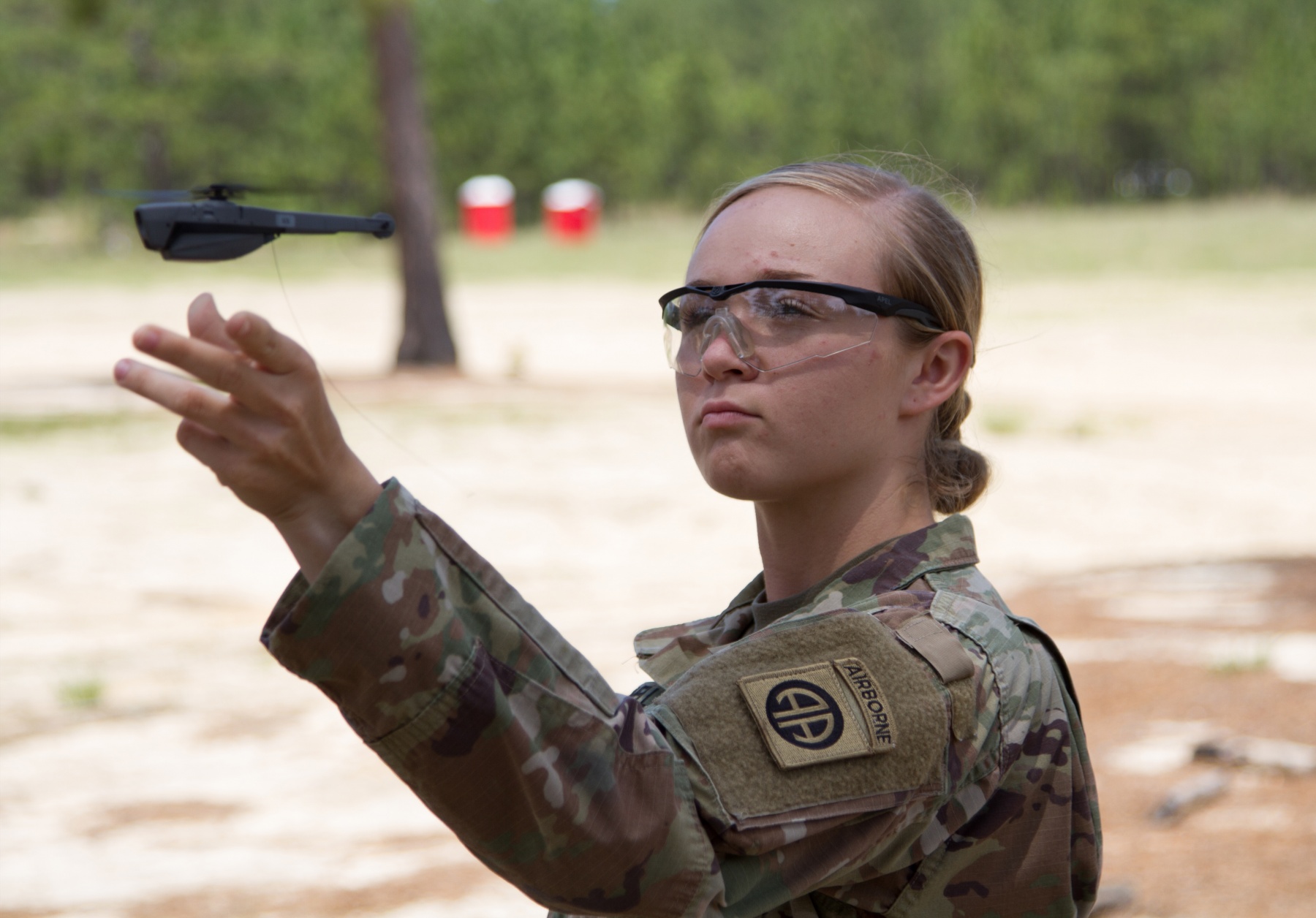
Teledyne-FLIR Merger Creates Tactical Drone Powerhouse - Breaking Defense
The combined company will offer a wide range of unmanned vehicles (mostly small ones) for air, land, sea, and underwater, said exec Roger Wells.
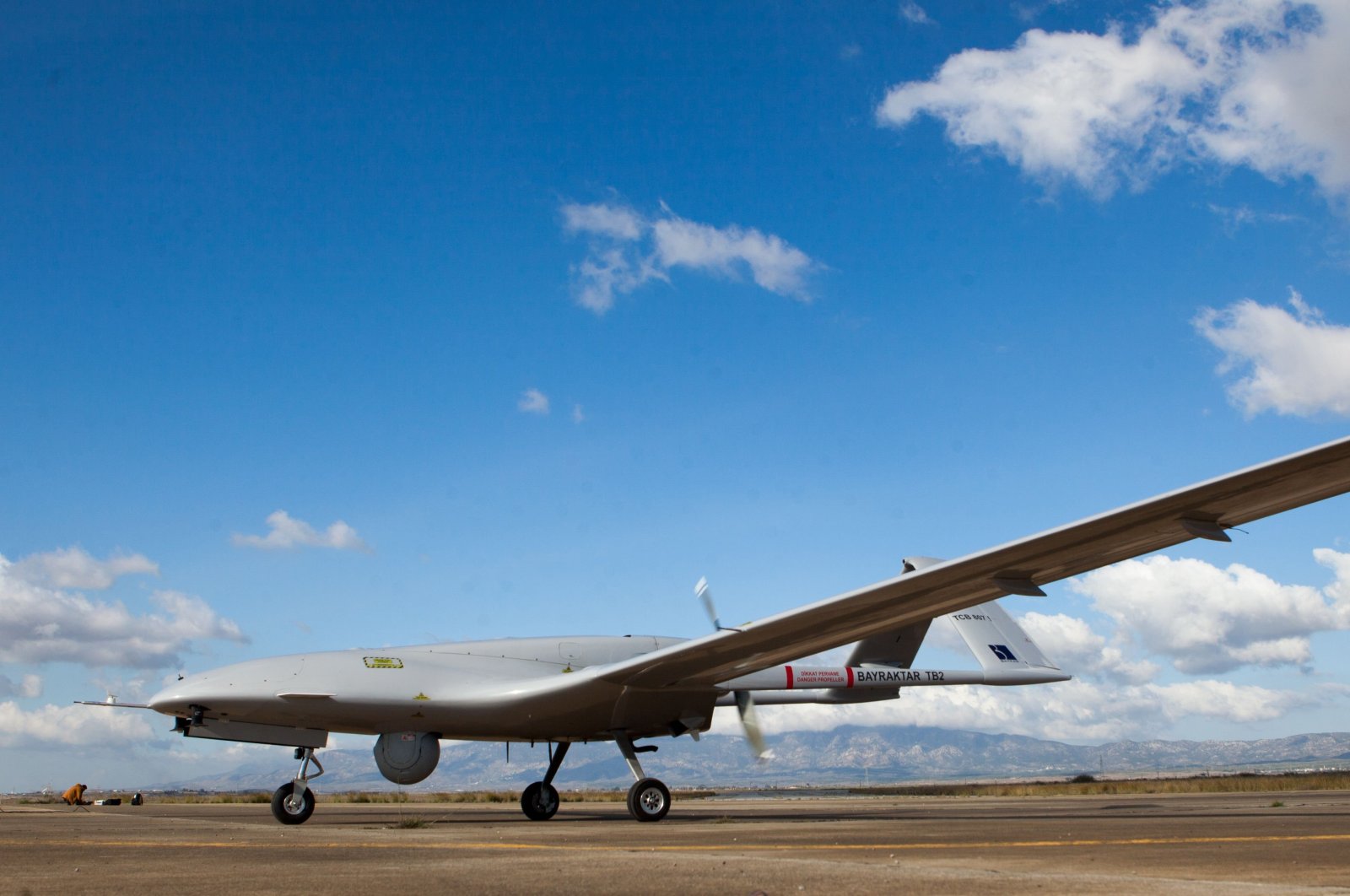
Poland to purchase Turkey's combat drones in 1st NATO sale
Poland will purchase 24 Bayraktar TB2 (Tactical Block 2) unmanned aerial vehicles (UAV) from NATO ally Turkey, Polish Defense Minister Mariusz Blaszczak...
Tämä on seuraava hyppäys teknologiassa
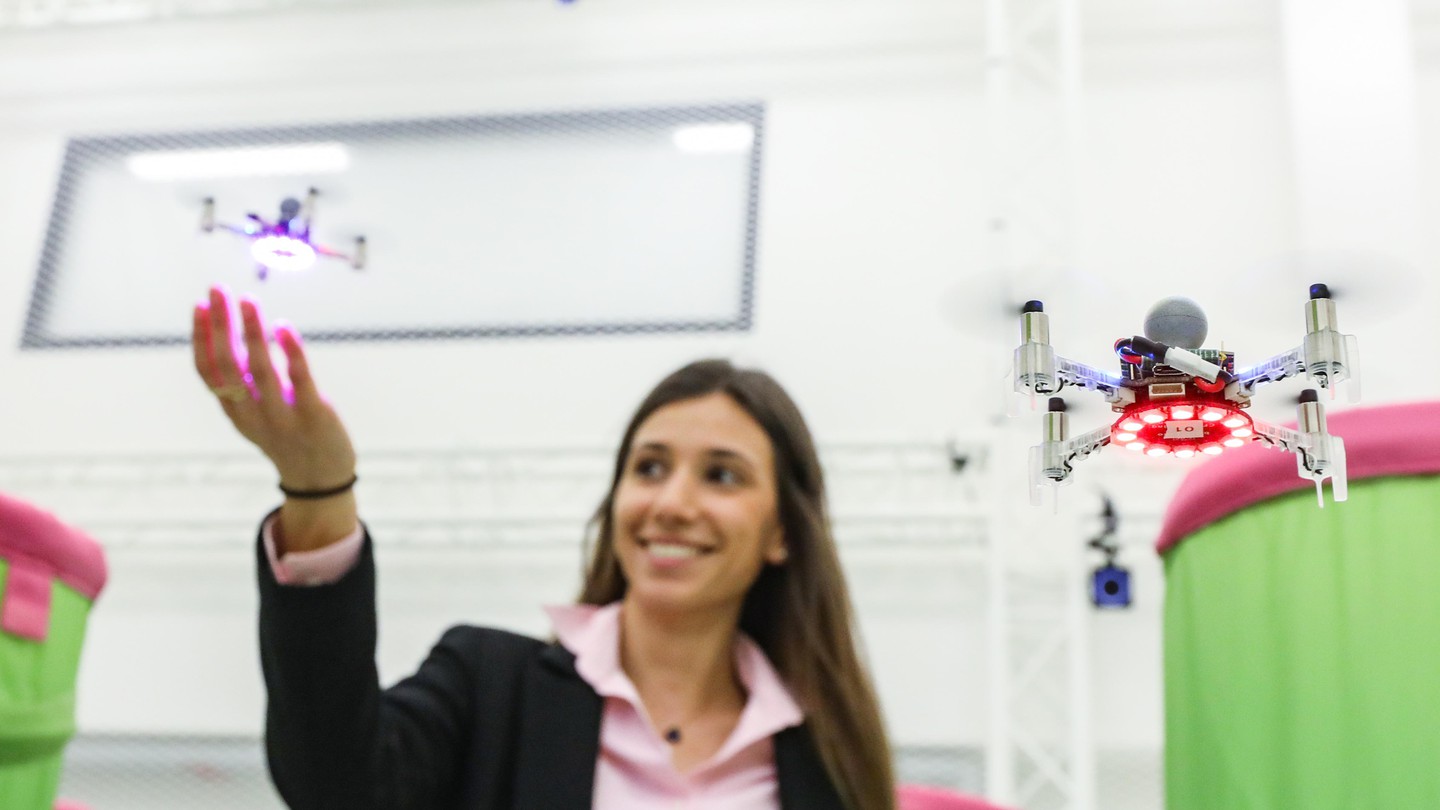
 actu.epfl.ch
actu.epfl.ch

 newsroom.fedex.com
newsroom.fedex.com

Helping drone swarms avoid obstacles without hitting each other
Engineers at EPFL have developed a predictive control model that allows swarms of drones to fly in cluttered environments quickly and safely. It works by enabling individual drones to predict their own behavior and that of their neighbors in the swarm.

Delivering the Future: FedEx Unveils Autonomous Delivery Robot
MEMPHIS, Tenn., February 27, 2019—FedEx Corp. (NYSE: FDX) announced today a development in cutting-edge delivery solutions to meet the rapidly changing needs of consumers — the FedEx SameDay Bot — an autonomous delivery device designed to help retailers make same-day and last-mile deliveries to...

Boosted by international expertise, UAE edges closer to homemade counter-drone tech
Electronic warfare specialist SIGN4L is preparing to mark two milestones this year, all related to destroying unmanned systems.

US Air Force set to award $490M contract to counter small drones
The service plans to award a contract worth up to $490 million to a single vendor that can team with other companies to provide various counter-drone products.

Italian Air Force eyes microwaves and lasers to defeat drones
Until lasers get the nod, the Air Force will continue using an anti-drone system of systems named ACUS, or Air Force Counter Unmanned System, which fights drone threats using radio frequency and GPS jamming.
Wegmanni osti siivun siitä osasta Milremiä, jota Patria ei saanut kynsiinsä.
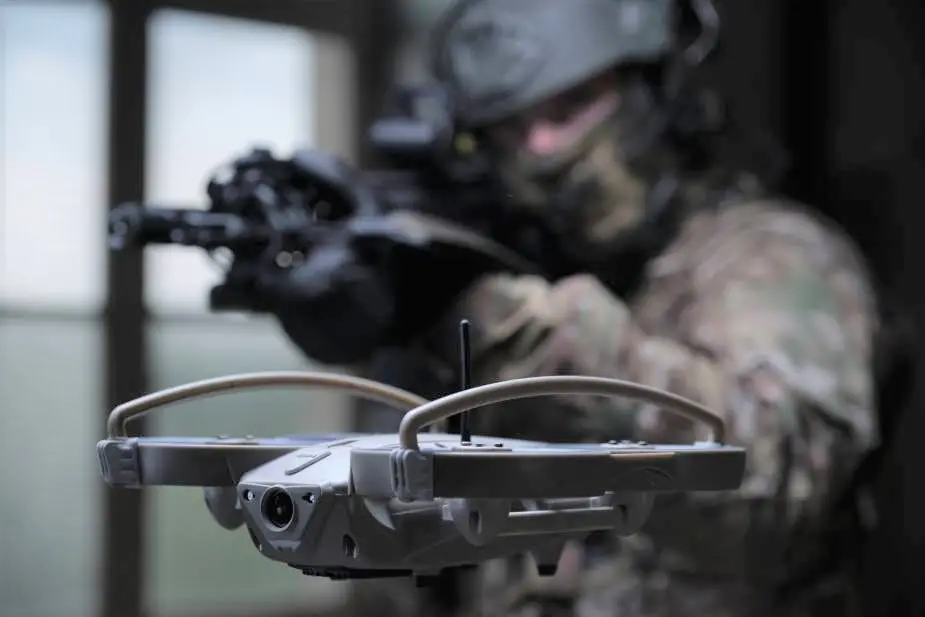
After five years of tests, research and development, the Belgian company Sky-Hero is launching the Loki Mk2, a tactical intervention drone intended for indoor use. The device fulfills all the expectations of civil protection forces: fast handling, 100% on-board technology, maneuverability, precision, daytime and night-time observation and evolution capability, with a sturdy, light design. The Belgian company has already equipped the main American, German, French, Belgian, Swiss and many other special forces.

Sky-Hero launches Loki Mk2 indoor tactical intervention drone
After five years of tests, research and development, the Belgian company Sky-Hero is launching the Loki Mk2, a tactical intervention drone intended for ind
Libyassa autonomisia droneja
 tekniikanmaailma.fi
tekniikanmaailma.fi
Täysin autonomiset tappajadroonit ovat ensimmäistä kertaa hyökänneet ihmisiä vastaan, YK:n huolestuttava raportti paljastaa
Miehittämättömien ilma-alusten eli droonien on pitkään pelätty kääntävän sodankäynnissä uuden sivun, jossa ihmisen asema päätöksentekijänä poistuu. Tuo
 tekniikanmaailma.fi
tekniikanmaailma.fi
Ei ole ihan selkeää.
Tämä kuvaa hieman miten ulalla ruotsalaiset on asian tilasta. Jo meiltä naapurista kun löytyy autonomista merimiinaa.
Tämä kuvaa hieman miten ulalla ruotsalaiset on asian tilasta. Jo meiltä naapurista kun löytyy autonomista merimiinaa.
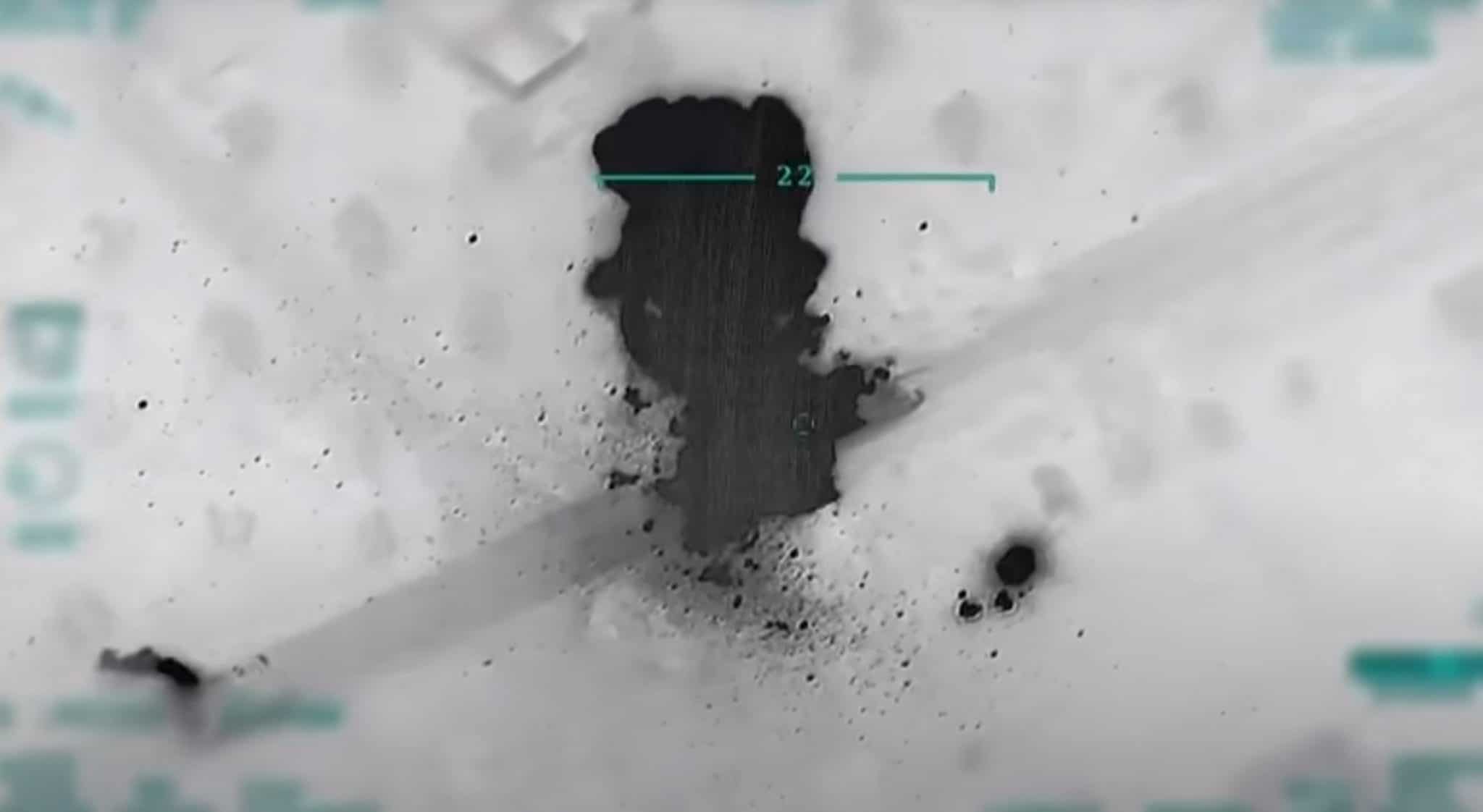
Muutos taistelukentällä: Halvat lennokit iskevät hiljaa taivaalta | Verkkouutiset
Muutos taistelukentällä: Halvat lennokit iskevät hiljaa taivaalta | Verkkouutiset
 www.verkkouutiset.fi
www.verkkouutiset.fi

A French Opinion on the Ethics of Autonomous Weapons
How will the world’s most powerful democracies deal with the ethical and legal dilemmas posed by the development of so-called “killer robots”, or lethal
warontherocks.com
Ettei vain osien saatavuus vaikeudu nyt kun tuo tieto on esillä...
Toisaalta, jenkit ovat voineet jo käydä useita vakavia keskusteluja tiettyjen tahojen kanssa.
Panssari Salama
Respected Leader
Toivottavasti autonomisten dronejen koodarit ovat sitä pätevämpää porukkaa. Fire and forget astunut käyttöön...
ULKOMAAT 9.6.2021 07:31
MIKA HORELLI
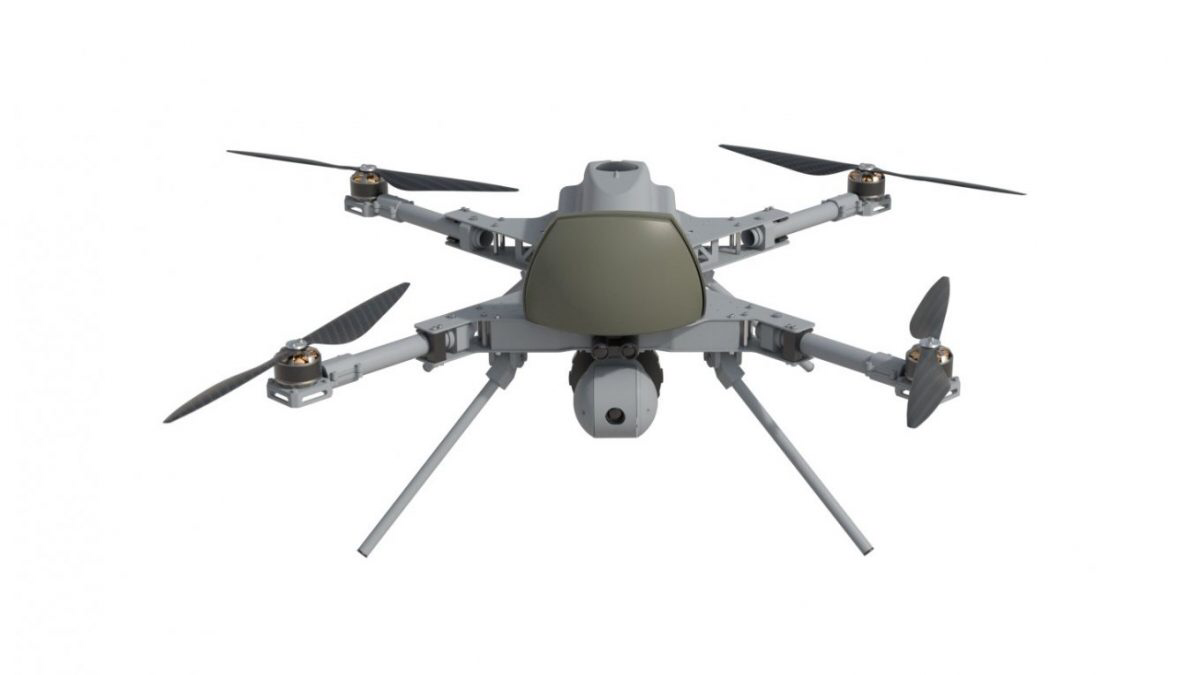
Turkkilaisvalmisteinen Kargu-lennokki. © WIKIMEDIA COMMONS
TÄYSIN itsenäisesti toimivia taisteludrooneja on käytetty todellisessa sotatilanteessa maaliskuussa 2020 eli jo yli vuosi sitten. Asia käy ilmi YK:n turvallisuusneuvoston Libya-asiantuntijaryhmän raportista.
Sen mukaan Libyan asevoimat hyökkäsivät turkkilaisvalmisteisilla Kargu-2 -lennokeilla kapinallisjohtaja Khalifa Haftarin joukkoja vastaan. Kargu-2 on niin sanottu itsetuholennokki, eli se lentää kohteensa viereen ja räjäyttää itsensä. Toisin kuin aiemmissa lennokki-iskuissa, ihminen ei kauko-ohjannut lennokkeja tai vahvistanut niiden kohdetta ennen iskua, vaan droonit toimivat täysin itsenäisesti tekoälyn ohjastamina.
Kokonaan autonomisten asejärjestelmien käytöstä on huhuttu aiemminkin, mutta Libya-asiantuntijaryhmän raportti on tiettävästi ensimmäinen kerta, kun virallinen taho vahvistaa niiden käytön.
Se, miten hyvin robottilennokit niille määrätystä tehtävästä selvisivät, ei käy ilmi raportista.
TEKOÄLYN ohjaamien aseiden ilmaantumista taistelukentille on povattu jo useiden vuosien ajan.
Niiden puolustajat perustelevat käyttöä muun muassa ihmishenkien säästämisellä. Kun taisteluun lähetetään sotilaiden sijaan koneita, ihmisuhreja tulee vähemmän.
Lisäksi robotteja pidetään ihmissotilaita tehokkaampina ja nopeampina.
Koska tietokoneet eivät väsy, eikä niillä ole tunteita, monet uskovat niiden tekevän myös vähemmän virheitä ja erottavan viholliset siviilikohteista ihmistä luotettavammin.
Sotien siviiliuhrit ovat nykyisellään valtava ongelma. Yksin Afganistanin konfliktissa kuoli YK:n mukaan vuoden 2020 aikana yli 3 000 ja haavoittui yli 5 000 siviiliä.
KRIITIKOIDEN mielestä tekoälyn ohjastamat aseet eivät kuitenkaan ratkaise siviiliuhrien ongelmaa – pikemminkin päinvastoin.
Bullet of Atomic Scientists -verkkojulkaisun haastattelema miehittämättömiin asejärjestelmiin erikoistunut turvallisuusasiantuntija Zak Kallenborn uskoo robottiaseiden yleistymisen lisäävän sotien ”oheisvahinkoja”.
Koska asejärjestelmät perustuvat tekoälyn itsenäiseen oppimiseen, niille on mahdotonta opettaa täysin pitävästi, kuka on tarkoitettu kohde ja kuka sivullinen. Muun muassa Human Rights Watch -kansalaisjärjestö on vedonnut päättäjiin robottiaseiden täyskiellon puolesta.
Asiantuntijoiden mukaan kiellon haikailijat ovat kuitenkin auttamatta myöhässä. YK yritti saada aikaan robottiaseiden täyskieltoa vuonna 2018, mutta Yhdysvallat ja Venäjä tyrmäsivät hankkeen.
Raportti: Täysin itsenäiset sotarobotit ovat olleet käytössä jo yli vuoden – Libya lähetti tekoälylennokit kapinallisten kimppuun
Miehittämättömiä asejärjestelmiä on käytetty jo vuosia, mutta aiemmin ne ovat aina toimineet ihmisen valvonnassa.ULKOMAAT 9.6.2021 07:31
MIKA HORELLI

Turkkilaisvalmisteinen Kargu-lennokki. © WIKIMEDIA COMMONS
TÄYSIN itsenäisesti toimivia taisteludrooneja on käytetty todellisessa sotatilanteessa maaliskuussa 2020 eli jo yli vuosi sitten. Asia käy ilmi YK:n turvallisuusneuvoston Libya-asiantuntijaryhmän raportista.
Sen mukaan Libyan asevoimat hyökkäsivät turkkilaisvalmisteisilla Kargu-2 -lennokeilla kapinallisjohtaja Khalifa Haftarin joukkoja vastaan. Kargu-2 on niin sanottu itsetuholennokki, eli se lentää kohteensa viereen ja räjäyttää itsensä. Toisin kuin aiemmissa lennokki-iskuissa, ihminen ei kauko-ohjannut lennokkeja tai vahvistanut niiden kohdetta ennen iskua, vaan droonit toimivat täysin itsenäisesti tekoälyn ohjastamina.
Kokonaan autonomisten asejärjestelmien käytöstä on huhuttu aiemminkin, mutta Libya-asiantuntijaryhmän raportti on tiettävästi ensimmäinen kerta, kun virallinen taho vahvistaa niiden käytön.
Se, miten hyvin robottilennokit niille määrätystä tehtävästä selvisivät, ei käy ilmi raportista.
TEKOÄLYN ohjaamien aseiden ilmaantumista taistelukentille on povattu jo useiden vuosien ajan.
Niiden puolustajat perustelevat käyttöä muun muassa ihmishenkien säästämisellä. Kun taisteluun lähetetään sotilaiden sijaan koneita, ihmisuhreja tulee vähemmän.
Lisäksi robotteja pidetään ihmissotilaita tehokkaampina ja nopeampina.
Koska tietokoneet eivät väsy, eikä niillä ole tunteita, monet uskovat niiden tekevän myös vähemmän virheitä ja erottavan viholliset siviilikohteista ihmistä luotettavammin.
Sotien siviiliuhrit ovat nykyisellään valtava ongelma. Yksin Afganistanin konfliktissa kuoli YK:n mukaan vuoden 2020 aikana yli 3 000 ja haavoittui yli 5 000 siviiliä.
KRIITIKOIDEN mielestä tekoälyn ohjastamat aseet eivät kuitenkaan ratkaise siviiliuhrien ongelmaa – pikemminkin päinvastoin.
Bullet of Atomic Scientists -verkkojulkaisun haastattelema miehittämättömiin asejärjestelmiin erikoistunut turvallisuusasiantuntija Zak Kallenborn uskoo robottiaseiden yleistymisen lisäävän sotien ”oheisvahinkoja”.
Koska asejärjestelmät perustuvat tekoälyn itsenäiseen oppimiseen, niille on mahdotonta opettaa täysin pitävästi, kuka on tarkoitettu kohde ja kuka sivullinen. Muun muassa Human Rights Watch -kansalaisjärjestö on vedonnut päättäjiin robottiaseiden täyskiellon puolesta.
Asiantuntijoiden mukaan kiellon haikailijat ovat kuitenkin auttamatta myöhässä. YK yritti saada aikaan robottiaseiden täyskieltoa vuonna 2018, mutta Yhdysvallat ja Venäjä tyrmäsivät hankkeen.
Tämä kuulostaa hiukan huolestuttavalta. Korjaavat toimenpiteet on olleet vakuuttavia.

 amp.thenationalnews.com
amp.thenationalnews.com
The crash and subsequent investigation under the direction of the Israeli Ministry of Transport has delayed delivery, scheduled initially for late 2019, until next year.
“According to the accident report, the crash was due to the fact that the V-tail unit became detached from the fuselage of the drone due to unexpectedly strong oscillations. The drone could thus no longer be controlled and crashed,” the Swiss government said.
“The Israeli manufacturing company Elbit Systems Ltd was able to eliminate the cause of this problem with regard to further production of the drone, without changing the drone’s design.
"The damage is to be borne entirely by Elbit Systems Ltd. The crash occurred on a test flight of the drone. This resulted in total loss of the drone, but no damage to persons or third-party damage.”
An upgraded version of the Hermes 900 will now be supplied to Switzerland.
One of the enhancements is the provision of a heavy fuel engine, which will enable the aircraft to achieve an increased rate of climb after take-off – a key requirement in mountainous country.

Switzerland’s Israeli-made military drone ‘crashed because of high winds' | The National
Inquiry was launched after drone, part of $264 million Swiss defence deal, was destroyed on test flight in Israeli desert

